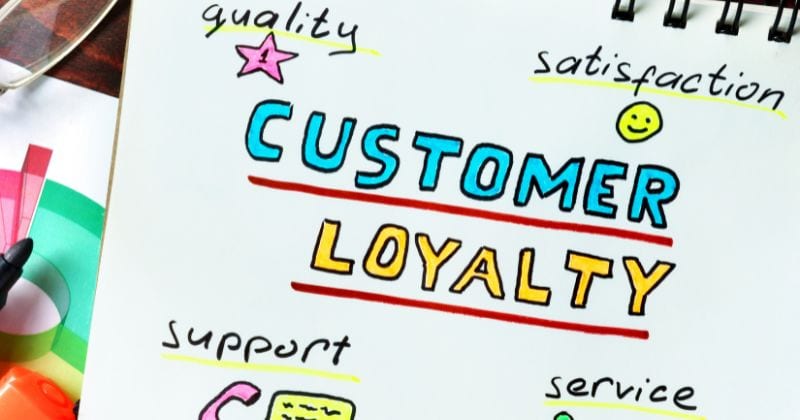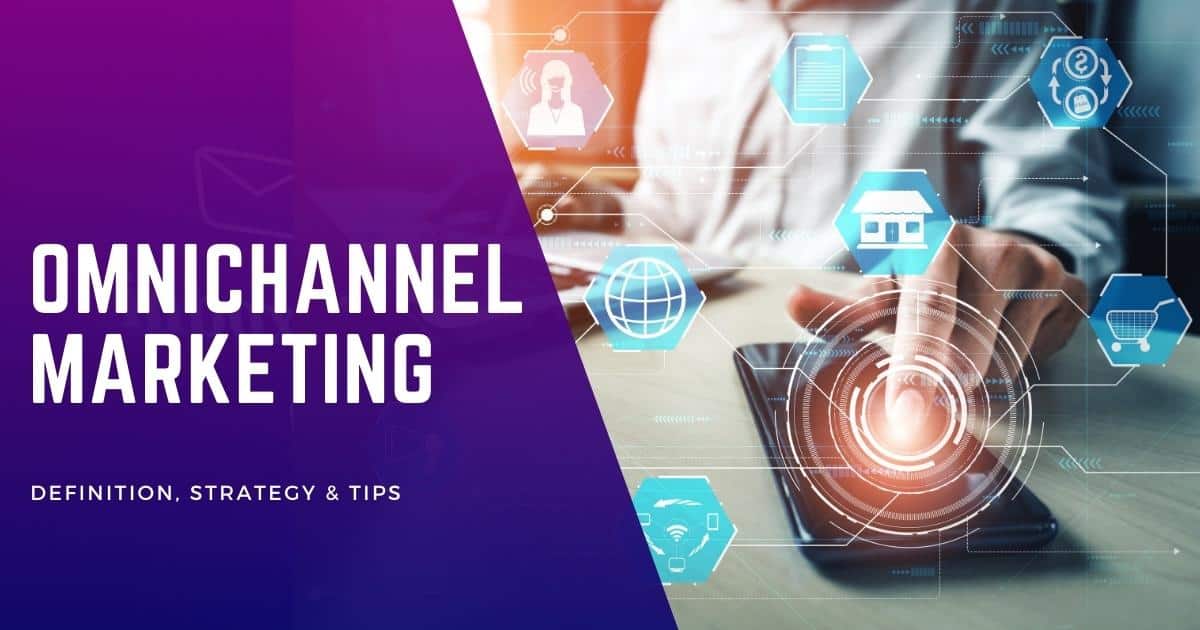Omnichannel marketing weaves together different customer touchpoints for a unified shopping experience. This strategy lets customers move smoothly between online and offline channels, making every interaction with the company consistent.
With my background in digital marketing, I understand the complexity of creating a seamless customer journey across multiple platforms. The challenge lies in presenting a coherent message and experience, regardless of where the interaction takes place. This isn’t just knowledge; it’s earned wisdom from addressing real problems, building effective strategies, and fine-tuning communication across channels.
Grasping the essence of omnichannel marketing is vital for any brand looking to stay competitive. By learning about this approach, you’ll be equipped to create more engaging and rewarding experiences for your customers. Stay tuned, as we’re about to get into the practical steps that can transform your approach to customer engagement.
Understanding the Difference: Multichannel vs. Omnichannel

To truly grasp the essence of omnichannel marketing, it’s essential to understand its key differences from multichannel marketing. While both approaches utilize multiple channels to reach customers, they diverge significantly regarding integration and customer-centricity.
Multichannel marketing uses different channels independently.
In a multichannel approach, businesses leverage various channels such as email, social media, and physical stores to interact with their customers. Each channel operates independently of one another, serving as separate touchpoints for engagement. This means that a customer might receive different messages or experiences depending on which channel they choose to engage with.
Omnichannel marketing ensures channel integration and consistency.
On the other hand, omnichannel marketing takes a more holistic approach by integrating all channels seamlessly. The goal is to provide customers with a consistent experience across every touchpoint. This means that whether a customer interacts through social media, visits a physical store, or engages via email, they will receive cohesive messaging and experiences throughout their journey.
Multichannel lacks synchronization between channels, leading to disjointed experiences.
I find that one of the key drawbacks of multichannel marketing is the lack of synchronization between channels. Since each channel operates independently without communication or coordination with others, there can be inconsistencies in messaging and experiences. For example, customers might receive conflicting promotion information if they engage with different channels simultaneously.
Omnichannel provides a cohesive experience by connecting all touchpoints.
Omnichannel marketing addresses this issue by ensuring that all touchpoints are connected and synchronized. Whether a customer starts their journey on one channel and continues on another or switches between channels during their interaction with the brand, the experience remains seamless and consistent throughout.
For me, this level of integration enhances customer satisfaction and loyalty since they don’t have to reiterate information or deal with discrepancies across platforms.
Unlike multichannel, omnichannel focuses on customer-centricity.
While multichannel marketing primarily focuses on utilizing multiple channels for brand exposure, omnichannel marketing places a greater emphasis on customer-centricity. The central goal of an omnichannel strategy is to create a personalized and tailored experience for each individual customer.
By understanding their preferences, behaviors, and history across all touchpoints, businesses can deliver targeted messaging and offers that resonate with customers on a deeper level.
Importance of Omnichannel Strategy
An effective omnichannel strategy is crucial in today’s competitive business landscape. It not only boosts customer engagement and loyalty but also ensures seamless experiences across multiple channels. Without a well-executed omnichannel approach, businesses risk losing customers to competitors who offer it. Let’s dive into the importance of an omnichannel strategy and how it can benefit businesses.
Boosts Customer Engagement and Loyalty
In this digital age, customers expect convenience and personalized experiences when interacting with businesses. An omnichannel strategy allows businesses to meet these expectations by providing a consistent experience across all touchpoints. Whether a customer is browsing through a website, visiting a physical store, or engaging with social media platforms, an effective omnichannel approach ensures they receive the same level of service and information.
By delivering a seamless experience, businesses can enhance customer engagement and build long-term loyalty. When customers feel valued and have their needs met consistently across different channels, they are more likely to become repeat buyers and advocates for the brand.
Seamless Experiences Across Multiple Channels
Gone are the days when customers would interact with businesses through just one channel. Nowadays, people use various devices such as smartphones, tablets, laptops, or even voice assistants to engage with brands. An omnichannel strategy recognizes this shift in consumer behavior and ensures that businesses are present on all relevant channels.
With an omnichannel approach in place, my customers can start their journey on one channel and seamlessly continue it on another without any disruption or loss of information.
For example, a customer might browse products on a mobile app but choose to make the purchase later on their desktop computer. An effective omnichannel strategy enables this smooth transition between channels, providing convenience for the customer while maximizing sales opportunities for the business.
Increases Sales and Revenue
One of the significant advantages of implementing an omnichannel strategy is its positive impact on sales and revenue. When customers have a consistent and seamless experience across channels, they are more likely to make a purchase. I’ve found research showing that businesses with strong omnichannel engagement strategies retain an average of 89% of their customers, compared to just 33% for those without.
Furthermore, an omnichannel approach allows businesses to leverage cross-selling and upselling opportunities. By integrating data from various channels, businesses can gain valuable insights into customer preferences and behaviors. This information can be used to tailor personalized offers and recommendations, increasing the likelihood of additional sales.
Staying Relevant in the Digital Landscape
I consistently teach that technology constantly evolves, so businesses must stay relevant and adapt to changing consumer expectations. An omnichannel strategy enables businesses to keep up with these changes by embracing new channels and emerging technologies.
By being present on multiple channels and providing a seamless experience, businesses can position themselves as modern and customer-centric brands. This not only attracts new customers but also helps retain existing ones who appreciate the convenience and flexibility offered by an omnichannel approach.
Creating an Effective Omnichannel Strategy

To create a successful omnichannel marketing strategy, there are several key steps you need to follow. By defining clear goals and objectives, understanding your target audience, integrating different channels, and ensuring consistent branding elements, you can develop a cohesive and effective approach to reaching your customers.
Define Clear Goals and Objectives
When starting a new campaign, my first step in creating an effective omnichannel strategy is to define clear goals and objectives. What do you want to achieve with your marketing efforts? Are you looking to increase brand awareness, drive sales, or improve customer loyalty? By clearly identifying your goals, you can align your strategy accordingly.
Identify the Target Audience
Understanding your target audience is crucial for any marketing strategy. It’s essential to know who your customers are and what their preferences and behaviors are. Conduct market research or analyze existing data to gain insights into their demographics, interests, purchasing habits, and preferred communication channels.
Integrate Different Channels
An effective omnichannel strategy involves integrating digital and offline channels into one cohesive system. This means seamlessly connecting your website, mobile app, social media platforms, email marketing campaigns, physical stores (if applicable), and other touchpoints where customers interact with your brand.
By integrating these channels effectively, you can provide a seamless experience for your customers as they move across different platforms. For example:
- Provide a consistent user interface across all digital channels.
- Enable customers to start a purchase on one channel (e.g., website) and complete it on another (e.g., mobile app).
- Offer personalized recommendations based on customer behavior across multiple touchpoints.
Ensure Consistent Branding Elements
Consistency is key. Your brand’s identity should be recognizable across all platforms. This includes consistent logos, color schemes, fonts, messaging tone of voice, visual elements, and unique selling points (USPs).
Ensuring consistent branding elements helps build trust and familiarity with your customers. It also reinforces your brand’s image and values, regardless of the channel they engage with. Consistency creates a cohesive experience that strengthens brand loyalty and recognition.
Monitor Analytics Data Regularly
To measure the effectiveness of your omnichannel strategy, it is crucial to monitor analytics data regularly. By analyzing key metrics such as website traffic, conversion rates, customer engagement, and sales attribution across different channels, you can gain valuable insights into what is working and what needs improvement.
Regular monitoring allows you to identify trends, spot areas of opportunity or weakness, and make data-driven decisions to optimize your marketing efforts. Use tools like Google Analytics or other analytics platforms to gather relevant data and track progress toward your goals.
Customer Journey Mapping for Omnichannel Success

To achieve success in omnichannel marketing, it is crucial to have a deep understanding of the customer journey. This involves comprehending each stage of the customer’s experience, from initial discovery to the final purchase decision-making process. Let’s explore how customer journey mapping can help optimize your omnichannel strategy and create a seamless customer experience.
Understand Each Stage of the Customer Journey
My first step in effective customer journey mapping is gaining a clear understanding of each stage that a customer goes through. This includes their initial discovery of your brand, their exploration and consideration of your products or services, and ultimately, their decision-making process leading to a purchase. By dissecting these stages, you can identify key touchpoints where customers interact with your brand.
Identify Touchpoints for Interaction
Mapping out touchpoints lets you pinpoint specific moments customers engage with your brand across various channels. These touchpoints may include interactions on social media platforms, visits to physical stores, browsing through your website or mobile app, or even engaging with customer service representatives. Identifying these touchpoints helps you gain insights into how customers connect with your brand throughout their journey.
Map Out Potential Pain Points
Once you’ve identified the touchpoints, you must map out potential pain points or gaps within the customer journey. These pain points can arise from inconsistencies in messaging across different channels or difficulties navigating different platforms. By identifying these pain points, you can address them strategically and ensure a smooth and seamless customer experience.
Optimize Each Touchpoint
With a comprehensive understanding of the customer journey and identified pain points, it’s time to optimize each touchpoint based on customer needs and preferences. This involves tailoring content and experiences at every interaction point to provide value and enhance the overall user experience. For example:
- Personalizing product recommendations based on shopping history.
- Streamlining the onboarding process for new customers.
- Ensuring a mobile-friendly experience across all platforms.
Learn from my experience – by optimizing each touchpoint, I know it creates a cohesive and engaging customer journey that fosters loyalty and drives conversions.
Continuously Refine the Customer Journey Map
Customer journey mapping is not a one-time task but an ongoing process. It requires continuous refinement based on feedback and data analysis. Regularly collecting customer feedback, monitoring analytics, and conducting user testing can provide valuable insights into areas where improvements can be made.
By staying proactive in refining your customer journey map, you can adapt to changing customer needs and preferences, leading to long-term success in your omnichannel marketing efforts.
Leveraging Customer Data for Insights
In the world of marketing, data is king. Collecting and analyzing customer data from various sources like website analytics, CRM systems, and social media platforms can provide valuable insights into customer behavior, preferences, and purchase patterns. By leveraging this data effectively, businesses can personalize their marketing messages and offer across channels, leading to improved customer engagement and increased sales.
Collecting and Analyzing Customer Data
To begin harnessing the power of customer data, it’s important to have a robust system in place for collecting and organizing this information. This can include utilizing tools like HubSpot or other automation software to gather data from multiple touchpoints along the customer journey. By integrating these tools with your website analytics and CRM systems, you can create a centralized customer information hub.
Once you have collected the necessary data, it’s time to analyze it for actionable insights. Look for patterns in customer behavior, such as which pages on your website they visit most frequently or which products they tend to purchase together. These insights can help you better understand your customers’ needs and preferences.
Personalizing Marketing Messages
Armed with valuable insights about your customers, you can now tailor your marketing messages to resonate with them on a deeper level. Use the data you have gathered to segment your audience into different groups based on demographics, interests, or past purchasing behavior. This allows you to create targeted campaigns that speak directly to each segment’s unique needs.
Personalization goes beyond simply addressing customers by name in an email; it involves crafting content that is relevant and meaningful to each individual. For example:
- If a customer has previously purchased running shoes from your online store, send them personalized recommendations for complementary products like athletic socks or fitness trackers.
- If a potential customer has shown interest in a particular product but hasn’t made a purchase yet, send them targeted offers or discounts to incentivize conversion.
By personalizing your marketing messages, you increase the chances of capturing your customer’s attention and driving them toward making a purchase.
Identifying Cross-Selling and Upselling Opportunities
Customer data can also help you identify opportunities for cross-selling or upselling. By analyzing past purchase patterns, you can determine which products or services are often purchased together. This information lets you strategically recommend additional items that complement a customer’s initial purchase.
For example, if a customer has recently bought a new smartphone from your online store, you could suggest accessories like phone cases or wireless headphones. By offering these complementary products at the right time, you not only enhance the customer’s experience but also increase their overall spending with your business.
Optimizing Marketing Campaigns
Data-driven insights play a crucial role in optimizing marketing campaigns. By monitoring the performance of different channels and campaigns, businesses can identify what is working well and what needs improvement. For example:
- If a particular email campaign generates high click-through rates and conversions, consider replicating its elements in future campaigns.
- If a social media ad is underperforming compared to others, analyze the data to understand why and make adjustments accordingly.
By continuously analyzing data and making informed decisions based on those insights, businesses can refine their marketing strategies over time to maximize results.
Achieving Personalization and Relevance
To truly connect with your target audience, personalization, and relevance are key in today’s competitive market. Tailoring marketing messages to customers’ interests and preferences is crucial for building strong relationships and driving conversions. Let’s explore some effective strategies to achieve personalization and relevance in your omnichannel marketing efforts.
Tailor Marketing Messages to Individual Customers’ Interests and Preferences
Understanding your audience is the first step toward delivering personalized messaging. Segmenting your customer base using demographic, behavioral, or psychographic segmentation allows you to group customers with similar characteristics. This segmentation helps you create targeted campaigns that resonate with specific customer segments.
By tailoring your marketing messages based on these segments, you can deliver content that speaks directly to their needs, desires, and pain points. For example, suppose you have a segment of customers interested in fitness products. In that case, you can create campaigns centered around health and wellness tips or showcase new workout equipment that aligns with their interests.
Deliver Personalized Content through Targeted Email Campaigns or Website Recommendations
Email marketing remains a powerful tool for delivering personalized experiences to your audience. By leveraging automation technology, you can send targeted emails based on customer behavior or preferences. For instance, if a customer has recently purchased running shoes from your website, you can follow up with personalized recommendations for running accessories or training programs.
Website recommendations also play a crucial role in delivering relevant content to visitors. By analyzing their browsing history or previous interactions on your site, you can provide tailored product suggestions or content recommendations that align with their interests. This not only enhances the user experience but also increases the likelihood of conversion by presenting them with options they are more likely to engage with.
Ensure Relevance by Aligning Messaging with the Customer’s Current Stage in the Buying Journey
Personalization goes beyond just understanding customer interests; it also involves delivering the right message at the right time. By aligning your messaging with the customer’s current stage in the buying journey, you can provide them with relevant information that guides them toward making a purchase.
For example, if a customer has recently added items to their cart but hasn’t completed the purchase, sending them a personalized email reminder with a discount offer can nudge them toward conversion. On the other hand, if a customer has already made a purchase, sending them personalized post-purchase emails with recommendations for related products or exclusive offers can encourage repeat purchases and foster loyalty.
Personalization Enhances Engagement and Drives Higher Conversion Rates
When customers feel that brands understand their needs and preferences, they are more likely to engage with marketing messages and take desired actions. Personalized experiences create a sense of connection and trust between the brand and the customer.
Studies have shown that personalization in marketing leads to higher engagement rates, increased click-through rates (CTRs), and improved conversion rates. According to research conducted by Epsilon, 80% of consumers are more likely to purchase when brands offer personalized experiences.
By investing in personalization strategies and leveraging data-driven insights, you can create meaningful interactions that resonate with your target audience. This not only helps drive conversions but also fosters long-term customer loyalty.
Enhancing Brand Recall and Following Guidelines

To maximize the impact of your omnichannel marketing efforts, it’s crucial to reinforce your brand identity across all channels consistently. By doing so, you can enhance brand recall and create a lasting impression on your audience. Let’s explore some effective strategies for achieving this goal.
Consistently Reinforce Brand Identity
Consistency is key. Your customers should be able to recognize your brand instantly, regardless of the channel they encounter it on. To achieve this, develop clear brand guidelines that define your visual elements, tone of voice, and messaging style.
Develop Brand Guidelines
Brand guidelines are a roadmap for maintaining a consistent brand image across various touchpoints. These guidelines outline how your brand should look, sound, and feel in customer interaction. They include details about logos, colors, fonts, imagery styles, and even the use of language.
By following these guidelines diligently, you ensure that each content or communication reflects your brand accurately. This consistency helps build trust and recognition among customers over time.
Train Employees on Brand Guidelines
Your employees are ambassadors of your brand. It’s essential to train them thoroughly on the brand guidelines so that they can represent your company consistently. When everyone within your organization understands the importance of adhering to these guidelines, they become advocates for your brand.
Train employees not only on visual aspects but also on the tone of voice and messaging style outlined in the guidelines. This way, they can effectively communicate with customers in a manner that aligns with your overall branding strategy.
Maintain Cohesive Visual Identity
A cohesive visual identity creates a consistent experience across different channels. Ensure that logos, colors, fonts, and imagery remain consistent throughout all touchpoints – your website, social media profiles, or physical stores.
When customers see familiar visuals associated with your brand, it triggers brand recall and reinforces their connection with your business. Consistency in visual identity helps create a positive customer experience, leading to increased brand loyalty and retention.
Following Guidelines Builds Trust
By following brand guidelines consistently, you build trust among your audience. When customers have a consistent experience across different channels, they develop a sense of familiarity and reliability with your brand. This builds confidence in your products or services and encourages repeat purchases.
Moreover, when customers encounter consistent messaging from your brand, they are more likely to perceive it as professional and reliable. This perception plays a crucial role in establishing credibility and attracting new customers.
Benefits of Following Brand Guidelines
Following brand guidelines has several benefits for businesses:
- Brand Recognition: Consistent branding helps customers recognize your brand instantly.
- Positive Experience: A consistent experience across all touchpoints creates a positive customer impression.
- Customer Retention: By maintaining consistency, you enhance customer loyalty and increase the chances of repeat business.
- Brand Advocacy: When customers have a positive experience with your brand consistently, they become advocates who promote your business to others.
- Increased Brand Awareness: Consistent messaging amplifies the reach of your marketing efforts, leading to increased awareness among potential customers.
Boosting Customer Loyalty through Omnichannel Marketing

In today’s competitive business landscape, customer loyalty is more important than ever. As a retailer or service provider, you want to ensure that your customers not only come back but also become advocates for your brand. One effective strategy to achieve this is through omnichannel marketing. By seamlessly integrating multiple channels and providing a consistent and personalized experience, you can boost customer loyalty and retention. Let’s explore some key tactics that can help you achieve this goal.
Offer Loyalty Programs that Span Multiple Channels
One way to incentivize customer loyalty is by offering comprehensive loyalty programs across all the channels your business operates in. Whether online, in-store, or through mobile apps, customers should be able to earn and redeem rewards seamlessly across these platforms. This ensures their loyalty is recognized regardless of how they engage with your brand.
Pros:
- Encourages repeat purchases and drives customer engagement.
- It provides an added incentive for customers to choose your brand over competitors.
- Allows for tracking and analyzing customer behavior across different touchpoints.
Cons:
- Requires careful integration of systems and data management across channels.
- It can be resource-intensive to implement and maintain.
Provide Exclusive Rewards or Discounts for Loyal Customers
Another effective approach is providing exclusive rewards or discounts tailored to loyal customers. This makes them feel valued and appreciated for their continued support. By offering special perks such as early access to sales, personalized offers based on their preferences, or freebies on birthdays, you create a sense of exclusivity that fosters loyalty.
Pros:
- Creates a sense of exclusivity and makes customers feel special.
- Incentivizes repeat purchases and encourages word-of-mouth referrals.
- Helps differentiate your brand from competitors.
Cons:
- Requires careful segmentation of loyal customers based on purchase history.
- Can potentially lead to customers gaming the system to receive rewards without genuine loyalty.
Use Personalized Communication to Make Customers Feel Valued
Personalization is key in today’s digital marketing landscape. By leveraging customer data and insights, you can tailor your communication to make customers feel valued and understood. Whether it’s through targeted email marketing campaigns, personalized product recommendations, or customized offers based on their preferences, personalization enhances the overall customer experience and strengthens loyalty.
Pros:
- Increases customer engagement and response rates.
- Enhances the perception of your brand as attentive and customer-centric.
- Helps build long-term relationships with customers.
Cons:
- Requires robust data management systems and compliance with privacy regulations.
- Can be challenging to strike the right balance between personalization and intrusion.
Engage with Customers through Social Media Platforms
Social media platforms provide an excellent opportunity for brands to engage directly with their customers. By actively participating in conversations, responding to comments and messages promptly, and sharing valuable content, you can foster a sense of community around your brand. This engagement builds trust, encourages loyalty, and creates brand advocates more likely to recommend your products or services to others.
Pros:
- Allows for real-time interaction with customers.
- It provides a platform for showcasing your brand’s personality and values.
- Facilitates word-of-mouth marketing through shares, likes, and comments.
Cons:
- Requires dedicated resources for managing social media accounts effectively.
- Negative feedback or complaints can quickly spread if not addressed promptly.
Implement Post-Purchase Follow-ups to Encourage Repeat Purchases
The journey doesn’t end once a purchase is made. Implementing post-purchase follow-ups is crucial in nurturing customer relationships and encouraging repeat purchases. Whether it’s a thank-you email expressing gratitude for their business or personalized recommendations based on their previous purchase history, these touchpoints keep your brand top-of-mind and demonstrate your commitment to customer satisfaction.
Pros:
- Reinforces positive customer experiences and strengthens brand loyalty.
- Provides an opportunity to gather feedback and address any issues or concerns.
- Encourages customers to make additional purchases and become repeat buyers.
Cons:
- Requires an efficient system for tracking purchase history and automating follow-ups.
- Overcommunication can lead to customer fatigue or annoyance if not well-executed.
By implementing these strategies, you can significantly boost customer loyalty through omnichannel marketing. Remember, it’s essential to provide a consistent and personalized experience across all channels, making your customers feel valued at every touchpoint. With the right approach, you can create long-lasting relationships with your customers, turning them into loyal advocates for your brand.
Testing, Measuring, and Iterating in Omnichannel Marketing

To ensure the effectiveness of your omnichannel marketing efforts, it’s crucial to continuously test, measure, and iterate your strategies. This allows you to optimize your campaigns and maximize results. Let’s explore key practices for testing, measuring, and iterating in omnichannel marketing.
Conduct A/B testing to compare different marketing approaches
A/B testing involves comparing two versions of a marketing campaign or element to determine which one performs better. By creating two variations and randomly assigning them to different segments of your audience, you can gather valuable insights into what resonates with customers. For example, you might test different email subject lines or call-to-action buttons to see which generates higher click-through rates.
Pros:
- Provides data-driven insights on customer preferences
- Helps identify the most effective marketing approach
Cons:
- Requires careful planning and execution
- May require a significant sample size for accurate results
Measure key performance indicators (KPIs) such as conversion rates or customer retention
Measuring KPIs is essential for evaluating the success of your omnichannel marketing efforts. These metrics provide tangible evidence of how well your campaigns are performing. Key performance indicators can include conversion rates, customer acquisition costs, average order value, customer lifetime value, and customer retention rates. By tracking these metrics over time, you can gauge the impact of your marketing strategies.
Examples of KPIs:
- Conversion rate: The percentage of website visitors who complete a desired action (e.g., making a purchase).
- Customer retention rate: The percentage of customers who continue to do business with your brand over a specific period.
- Average order value: The average amount spent by customers during each transaction.
Analyze data regularly to identify areas for improvement
Regular data analysis provides valuable insights into consumer behavior and helps identify areas where improvements can be made. By examining data from various touchpoints, such as website analytics, social media engagement, and customer feedback, you can gain a deeper understanding of your audience’s preferences and pain points. This information allows you to make informed decisions about refining your marketing strategies.
Iterate and optimize marketing strategies based on data-driven insights
Once you have analyzed the data, it’s time to iterate and optimize your marketing strategies. Use the insights gained from A/B testing and KPI measurements to refine your campaigns for better results. This could involve tweaking messaging, adjusting targeting parameters, or experimenting with different channels. The goal is to improve your omnichannel marketing efforts based on data-driven insights continuously.
Continuously monitor and adjust campaigns to maximize results
Omnichannel marketing requires constant monitoring and adjustment to ensure optimal performance. Keep a close eye on key metrics and regularly assess campaign performance. If certain channels or tactics are underperforming, consider reallocating resources or trying new approaches. By staying agile and responsive, you can adapt your campaigns in real time to maximize results.
Examples of Successful Omnichannel Campaigns
In the world of marketing, omnichannel campaigns have become increasingly popular. These campaigns seamlessly integrate various platforms and channels to create a unified and personalized customer experience. Let’s take a look at some successful examples of omnichannel campaigns that have made a significant impact on their respective industries.
Starbucks’ Mobile App Seamlessly Integrates with In-Store Experiences
Starbucks has mastered the art of omnichannel marketing through its mobile app. The app allows customers to order and pay for their favorite drinks in advance, saving time and avoiding long queues. But what differentiates Starbucks is how they seamlessly integrate this digital experience with their physical stores.
When customers enter a Starbucks store, they can skip the line altogether by simply picking up their pre-ordered drink from the designated area. This integration between the mobile app and in-store experiences creates a seamless transition for customers, making their overall experience more convenient and enjoyable.
Nike’s “NikePlus” Program Connects Online Shopping, In-Store Experiences, and Personalized Recommendations
Nike’s “NikePlus” program is another excellent example of an effective omnichannel campaign. This program connects online shopping with in-store experiences while providing personalized recommendations based on customer preferences.
Customers can browse Nike’s website or use the mobile app to explore products, read reviews, and make purchases. They can also visit physical Nike stores to try on shoes or apparel before making a final decision. The “NikePlus” program offers exclusive rewards and benefits to members, creating a sense of loyalty among customers.
Disney Uses MagicBands to Enhance Theme Park Experience
Disney is known for creating magical experiences, both on-screen and in its theme parks. To enhance the theme park experience further, Disney introduced MagicBands – wearable devices that serve as tickets, hotel keys, payment methods, and even FastPasses for rides.
By linking various aspects of a visitor’s trip, such as tickets, hotel reservations, and ride preferences, Disney creates a seamless and personalized experience for its guests. MagicBands allows visitors to navigate the park effortlessly and enjoy their time without worrying about carrying multiple cards or documents.
Sephora Offers a Unified Shopping Experience
Sephora, the renowned beauty retailer, has successfully implemented an omnichannel approach to provide customers with a unified shopping experience. Whether customers shop on Sephora’s website, use their mobile app, or visit physical stores, they can expect consistency in product availability, pricing, and promotions.
Sephora also offers virtual try-on tools on its website and app that allow customers to test different makeup products before purchasing. This integration of digital tools with physical stores ensures that customers have access to the same level of service and convenience across all channels.
Amazon Provides Consistent Customer Service through Various Channels
It’s hard not to mention Amazon. The e-commerce giant has built its empire by providing consistent customer service across multiple channels.
Amazon offers chatbot assistance on its website for immediate support, email support for more complex inquiries or issues, and phone assistance for those who prefer speaking directly with a representative. By providing various communication channels, Amazon ensures that customers can reach out for help in whichever way they find most convenient.
Over to You
Omnichannel marketing ties together all the ways we shop and interact with a brand, online or in person. It’s about giving customers a smooth and personal experience. This strategy helps businesses meet customers’ needs better and build stronger loyalty.
To make the most of omnichannel marketing, look at your customer’s shopping journey. Use what you learn about them to make their experience better. Keep checking and improving your approach. If you’re ready to give your customers a shopping experience they’ll remember, it’s time to use omnichannel marketing in your business.
FAQs
How can I measure the success of my omnichannel marketing campaign?
Measuring the success of an omnichannel marketing campaign requires tracking key performance indicators (KPIs) such as conversion rates, customer engagement metrics (e.g., click-through rates), average order value (AOV), and customer lifetime value (CLV). By analyzing these metrics, you can evaluate the effectiveness of your campaign and make data-driven decisions to optimize your strategy.
What role does customer data play in omnichannel marketing?
Customer data is at the core of successful omnichannel marketing. It provides valuable insights into customer behaviors, preferences, and purchase patterns. By leveraging this data, businesses can deliver personalized experiences and targeted messaging across multiple channels, ensuring relevance and enhancing customer engagement.
How can I ensure consistency across different channels in my omnichannel strategy?
To ensure consistency across different channels in your omnichannel strategy, it’s essential to establish brand guidelines that encompass tone of voice, visual identity, and messaging. Implementing a centralized content management system can also help streamline content creation and distribution processes while maintaining brand coherence.
Is omnichannel marketing only relevant for large businesses?
Omnichannel marketing benefits businesses of all sizes by ensuring a consistent customer experience across multiple platforms. Smaller enterprises gain a competitive edge by providing seamless service and communication, which can foster customer loyalty and enhance brand reputation.
Can social media platforms be considered part of an omnichannel strategy?
Social media platforms are integral to omnichannel strategies, connecting with customers where they engage daily. They facilitate consistent messaging, customer service, and personalized experiences, essential to a holistic omnichannel approach.



